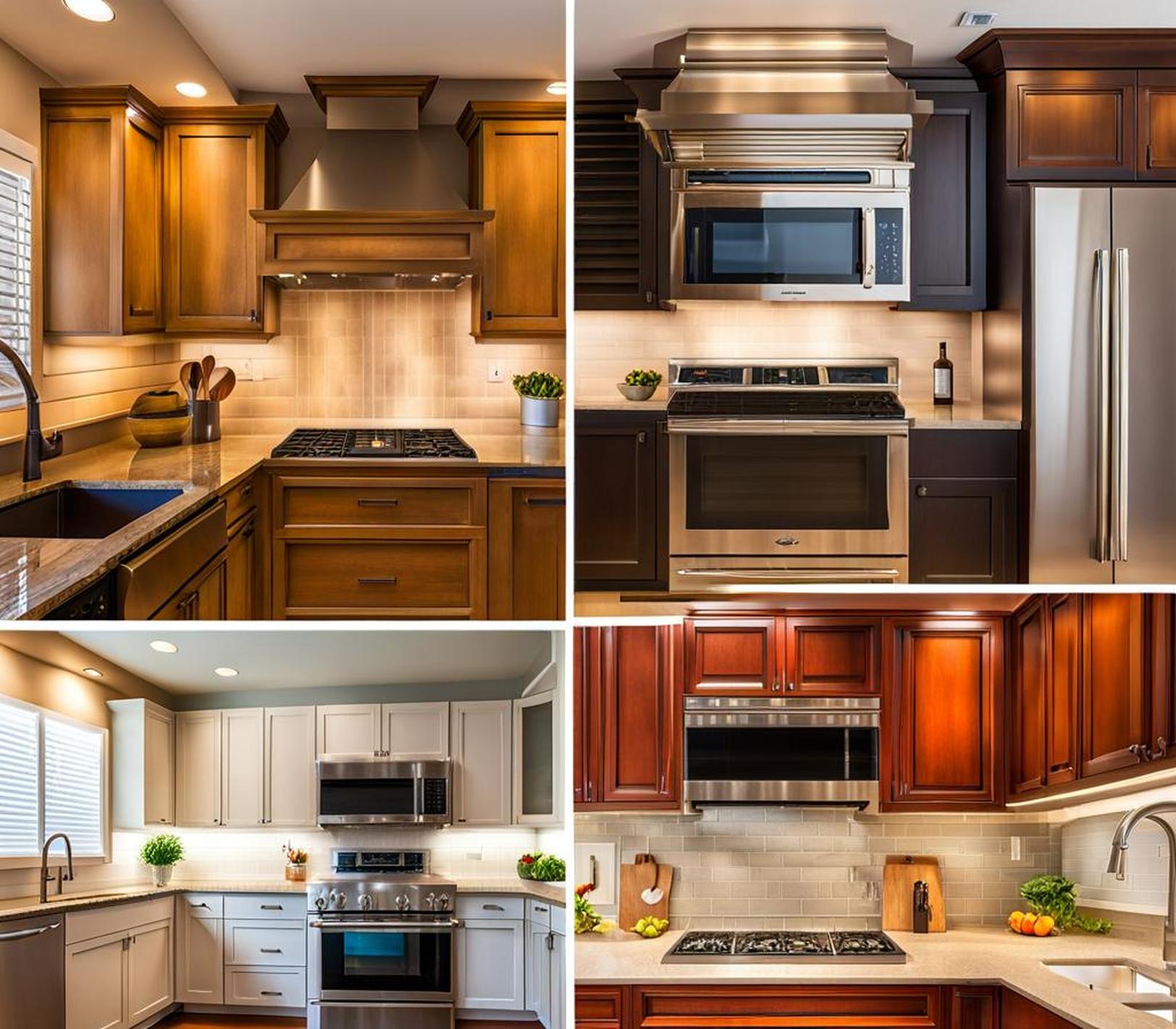Proper ventilation is critical for a clean, comfortable kitchen environment. The right exhaust fan clears away smoke, grease, odors, and excess humidity from cooking. With so many types of kitchen exhaust fans available, choosing the model best suited to your needs and kitchen layout takes careful consideration.
Range Hoods Offer Powerful Ventilation Above the Cooktop
Range hoods are installed directly over the stove or cooktop. By capturing airborne contaminants at the source, they offer very effective ventilation for high-heat or messy cooking.
Range hoods come in various widths to align with the size of your range or cooktop. Larger models up to 48 inches wide are ideal for professional-grade ranges. Smaller hoods around 24 to 30 inches wide suit standard home ranges.

Depending on the style, range hoods either vent vertically through the ceiling or horizontally through the rear wall. Ducted range hoods are more powerful since they expel air outside, while ductless models recirculate air through filters.
| Pros | Cons |
| – Capture smoke and odors directly at the source | – Need regular filter cleaning or replacement |
| – Most effective for heavy-duty cooking | – Require precise installation over the range |
| – Come in various designs and finishes | – Often the most expensive option |
With powerful ventilation focused right where you need it, a range hood is ideal for avid home cooks.
Ceiling or Wall Exhaust Fans Offer Flexible Placement
As an alternative to range hoods, you can install exhaust fans in the ceiling or high on the wall. While they aren’t positioned directly over the cooktop, fans can efficiently circulate air throughout the kitchen.
Exhaust fans come in a range of sizes and designs to blend seamlessly into your kitchen. Instead of venting outside, some models filter and recirculate interior air.
Since ceiling or wall fans aren’t limited to cooktop placement, they offer flexible positioning options. You can install a fan in the best location to capture steam, grease particles, and odors.
| Pros | Cons |
| – Don’t need to align with cooktop | – Not as effective for heavy cooking |
| – Often quieter operation | – Require regular filter cleaning |
| – More affordable cost | – Less powerful ventilation |
For light or moderate cooking, ceiling and wall exhaust fans provide an economical solution.
Downdraft Systems Hide Away Under Cabinets
Downdraft ventilation draws air across the cooktop and down through vents built into cabinets or counters behind the range.
Retractable or pop-up downdraft vents activate when needed and tuck away when not in use. This sleek built-in design keeps sightlines open in modern kitchens.
Since downdraft systems pull air downward, they’re not as powerful as overhead range hoods. Limitations on ducting through cabinets also constrain ventilation performance.
| Pros | Cons |
| – Discreet built-in design | – Significantly less powerful |
| – Leaves sightlines open | – Limited installation options |
| – Easy to use and maintain | – Works best with electric stoves |
For low-heat electric cooking, downdraft fans offer an unobtrusive option.
To select the best system for your kitchen, consider the size and layout, your typical cooking habits, noise limits, and aesthetic preferences.
Overhead range hoods are the gold standard for highly effective ventilation, especially for serious cooks. But ceiling, wall, or downdraft fans may suit kitchens with lighter cooking demands.
Seek professional installation services to ensure your exhaust fan meets building codes and works efficiently for years to come.
The right exhaust fan can improve the air quality in your kitchen.
